Bullock Bridge biodiversity monitoring update
Witchelina spring bird survey
Rebirding the Mount Lofty Ranges
Kangaroo Island conservation highlights

KIDS on COUNTRY DOC ACQUIRED BY NITV See P. 2




Bullock Bridge biodiversity monitoring update
Witchelina spring bird survey
Rebirding the Mount Lofty Ranges
Kangaroo Island conservation highlights

KIDS on COUNTRY DOC ACQUIRED BY NITV See P. 2



In June 2024, Walkley Award-winning journalist and documentary filmmaker Daniel Clarke joined the Kids on Country team and students and teachers from Le Fevre High School for a five-day camp at Witchelina Nature Reserve. The resulting film includes insights from Adnyamathanha/Kuyani Elder, Beverley Patterson, and captures the journey of a group of Aboriginal young people experiencing this life-changing program.
The film premiered at a screening in early February at the Odeon Star Cinema in Semaphore to an excited audience. Karla Grant, presenter, producer, and journalist for SBS’s national Indigenous current affairs program Living Black, hosted the event.
We were proud to have the students and teachers from Le Fevre High School who feature in the documentary, along with their families attend the premiere, as well as senior Aboriginal Elders, Aboriginal community members, members of the Nature Foundation Board and Aboriginal Advisory Group, Nature Foundation staff including the Kids on Country™ team, donors, corporate partners and supporters of the Kids on Country™ Junior Ranger Program, industry representatives and other supporters including the Honorable Susan Close MP, Deputy Premier for South Australia and State Member for Port Adelaide, the Honourable Mike Rann, former Premier for South Australia and Chair of the South Australian Film Corporation, and Claire Boan, Mayor of the City of Port Adelaide Enfield. Guests walked the red carpet before enjoying drinks and canapés ahead of the film screening. This was followed by a Q&A hosted by Karla Grant, who was joined by those who featured in the film and filmmaker Daniel Clarke.
“When I heard about the impact these camps were having on First Nations kids, I was motivated to share this story. Capturing the change in the kids as they progressed through the week and seeing their hearts and minds opened to their spiritual connection to the land was inspiring,” said Daniel Clarke.
“It was a real privilege to be granted exclusive access to attend the Kids on Country camp and for the students to welcome me so openly into their inner sanctum,” he said.
During the Q&A, the students shared their excitement at seeing themselves and their camp experience on the big screen and how being involved in the program has impacted their studies and their lives.
“Since launching in 2016, the Kids on Country junior ranger program has become much sought-after, with enquiries from across Australia,” said Alex Nankivell, CEO of Nature Foundation.
“Collaborating with Traditional Custodians is incredibly important to Nature Foundation. Traditional ecological knowledge has an invaluable role in achieving biodiversity impact, and the opportunity to connect kids to culture and conservation on country has positive outcomes for many.
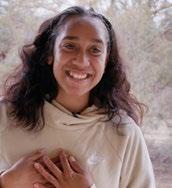

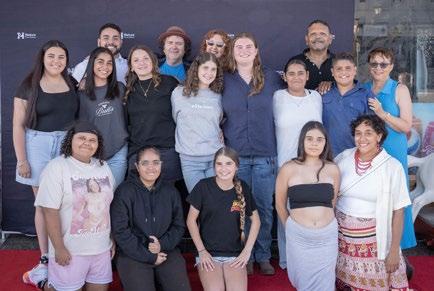

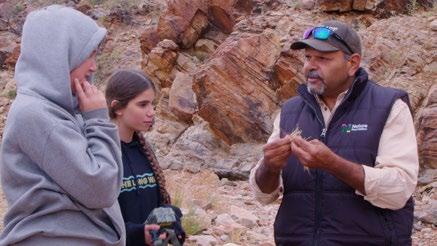
“We’re very privileged to work closely with Adnyamathanha/Kuyani Elder, Beverly Patterson, Katie Perry and Warren Milera on this program, and we’re incredibly proud to have this documentary available for all Australians to witness the transformative power of caring for country.”
The Nature Foundation team and Board are delighted to share that NITV has acquired the recently produced Kids on Country documentary. It will be broadcast multiple times over the coming three years on NITV and available to stream via SBS on Demand!
Our heartfelt thanks go out to everyone who has supported the Kids on Country™ program over the years and to everyone who helped make the premiere a memorable evening for the superstar students.
Look out for the Kids on Country documentary on NITV and SBS on Demand from March 2025.
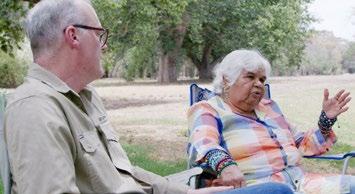

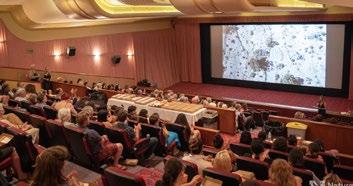
In the heart of Australia, a group of Aboriginal high school students are embarking on a life-changing journey— one that blends ancient cultural traditions with modern conservation practices.
The Kids on Country documentary follows a passionate cohort of Aboriginal girls from Le Fevre High School as they immerse themselves in a week-long adventure, learning to care for Country, develop leadership skills, and strengthen their cultural identity.
Over five days, these young women work alongside Traditional Owners and Aboriginal mentors, exploring the deep connection between land, culture, and conservation. From bush medicine and sustainable land management to the art of storytelling around the campfire, they gain hands-on knowledge of the very practices that have sustained Aboriginal people for millennia. This immersive program empowers them to become future leaders in their communities, equipped with the confidence and skills to make a positive impact on both the land and their future.
Through stunning landscapes, heartfelt stories, and unforgettable moments, Kids on Country showcases how cultural pride, education, and environmental stewardship can come together to shape the next generation of Aboriginal leaders.
This documentary highlights the incredible strength of community, the beauty of Aboriginal traditions, and the transformative power of caring for Country—an inspiring journey that will stay with these young participants for years to come. Join us on this powerful and emotional journey, as these Junior Rangers connect with Country, their culture, and themselves.

Jan Ferguson OAM

Hello, I do hope you have had a good start to 2025. From an organisation perspective, we have hit the ground running with the recent premiere of the Kids on Country documentary, a project we can all be proud of.
The film has been acquired by NITV, a testament to its quality and impact. The Kids on Country Junior Ranger Program, which began in 2016, has grown and succeeded thanks to the unique combination of Aboriginal culture and conservation, and the passion and expertise of all those involved. If you haven’t had a chance to see the film yet, I encourage you to look out for it when it screens on NITV or stream it on SBS On Demand.
The Board recently gathered for our annual Board Retreat, a valuable opportunity to come together, review results, and plan for the future in line with our Strategic Plan: Towards 2030. We have had some positive impacts over this past year with the acquisition of Bullock Bridge and Mongolurring, increasing the capacity of the staff team, and being involved with some innovative and critical projects such as the audio monitoring project with UNSW and partnering on the ReBird the Ranges alliance. There is still more to do though in achieving our goal to double our impact by 2030 and I look forward to sharing more outcomes from the Board throughout the year and appreciate your ongoing support.
In more news from the Board, Professor Phil Weinstein has decided after many years of dedicated service to step down as a Director. Personally, I will miss Phil’s sense of humour and sage advice. I wish him well on his next adventures! You can read more about Phil's valuable contributions further in this edition.
I would like to take a moment to thank everyone who has supported our recent Forever Nature Fund: Mongolourring Conservation Management Appeal. We were fortunate to have the 1,200-hectare property donated to the foundation; however, conserving, restoring, and protecting the land for future generations relies on active conservation work. Your donations—large or small—play an important role in achieving our vision and mission.
Welcome also to our new members, who join our renewing members for another year of conservation impact. Your support is invaluable, and we couldn't achieve our goals without you. Thank you for sharing our care and concern for the environment. I look forward to sharing more updates and catching up with you throughout the year.
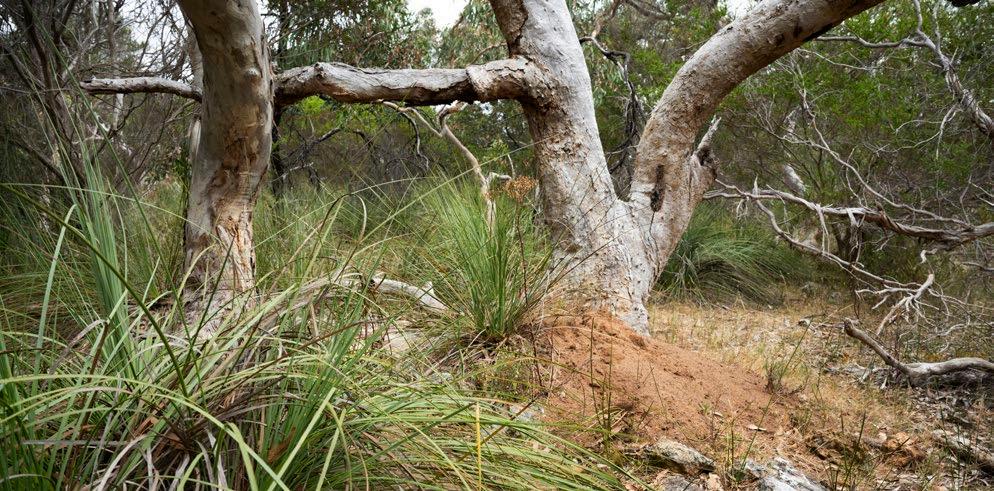

I hope this edition of Nature Matters finds you well. The staff team and I enjoyed a brief rest over the festive period and have started 2025 refreshed and ready to tackle our conservation goals.
As you will read over the coming pages, we ended 2024 strong with reserve surveys and our Member and Supporter Thank You evening at Payneham Bowling Club and have already had a busy start to this year.
In the last edition, we introduced a couple of new team members—Jem and Paul—who bring extensive experience and skills to the team. We recently welcomed an Adelaide-based Conservation Land Manager, Kelsey Bennett to the team. You can learn more about Kelsey in this edition. These additions have created a solid Reserve Management team, providing consistent management across our growing network of nature reserves and working closely with our Science & Knowledge and Volunteer & Visitor Engagement teams to collaborate on conservation activities.
I have been with Nature Foundation for 17 years, the last two as CEO, and it is fulfilling to see the team grow and expand. For what might be considered a small organisation, we punch above our weight, and this can largely be attributed to the skills and tenacity of our team.
We work in an ever-changing and challenging space, and I am confident in our capacity to achieve our organisation’s goals, contributing to improvements in biodiversity and the environment for all. This year’s work plans are focused on completing baseline biodiversity surveys across Bullock Bridge,
Mongolurring and Geegeela nature reserves to allow us to develop and implement evidence-based conservation management plans that achieve important results and outcomes for nature.
We also continue our efforts to positively impact nature beyond our reserves and contributed our feedback to the draft Biodiversity Bill for South Australia, which was recently open for community consultation. It is a lengthy and complex piece of legislation, but one that is vital for conserving, restoring, and protecting our native habitats and species. I look forward to seeing how it progresses and continuing to ensure the concerns of our members and supporters are heard.
It was wonderful seeing some of you at the recent Kids on Country documentary premiere. It was an exciting evening, and the students from Le Fevre High School rightfully stole the show, sharing their candid experiences and insights. I had the honour of developing the initial Kids on Country™ Junior Ranger Program and am thrilled to see how far it has come. Do look out for the film when it airs on NITV and SBS On Demand from March.
As always, thanks for your support, I look forward to keeping you up to date with our 2025 activities and results.
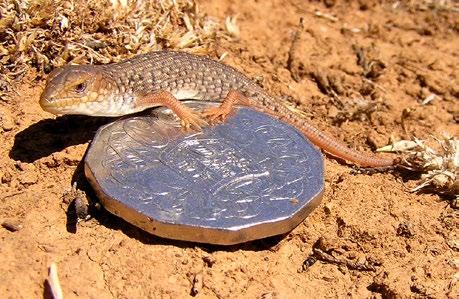
October 2024 saw the undertaking of Pygmy Bluetongue lizard surveys across Nature Foundation’s Tiliqua Nature Reserve and a second site near Burra, owned by Burra Community School.
Funding from Northern & Yorke Landscape Board will support regular surveys over three years to assist with population monitoring estimates, using the technique developed by Science and Knowledge Project Officer Dr Lucy Clive, which has been adopted as best practice by the Pygmy Bluetongue Recovery Team.
The property owned by Burra Community School was affected by a bushfire in January 2024, which drove a desire to better understand and monitor the population of Pygmy Bluetongue lizards (Tiliqua adelaidensis) known to reside there and provided an opportunity to make the first assessments of the post-fire recovery of a population of Pygmy Bluetongue lizards.
Early survey data analysis indicates a larger population size at Tiliqua Nature Reserve than at the Burra Community Schoolowned property. This is most likely due to the conservation actions and protection that have been in place at Tiliqua since its acquisition in 2010. The school property has been managed to date with more of an agricultural focus.
The Science and Knowledge team will further analyse the survey data and contribute it to our work with the Pygmy Bluetongue Recovery Team. This information will not only support longterm monitoring and understanding of the impacts of active conservation and climate change on the tiny species but also assist with decision-making regarding future actions to ensure the continuation of Pygmy Bluetongues in the wild.
Many thanks to all those who supported the surveys, including students from Flinders University, Northern & Yorke Landscape Board staff, Nature Foundation volunteers, and students and staff from Burra Community School.
This project is supported by the Northern & Yorke Landscape Board’s Grassroots Grants program, and is funded by the regional landscape levy.

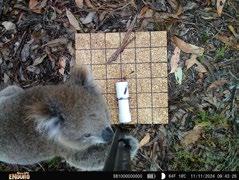
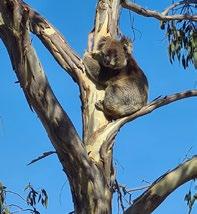

In early January our Science and Knowledge Program Manager, Dr Paul van Ruth, visited Bullock Bridge Nature Reserve in South Australia’s southeast to inspect the reserve and its biodiversity monitoring sites.
He was greeted by a koala upon entering the reserve, encountered several kangaroos during his travels, and observed five Mallee Fowl and one Mallee Fowl mound.
We commenced a long-term biodiversity monitoring program in early October, with data routinely collected at ten sites across the reserve on native bird species, mammals, reptiles, vegetation, and invasive species*. The camera traps have already detected a variety of native and invasive species. This data will be vital to developing the reserve's conservation management plan.
As part of Paul’s visit, he deployed audio song meters at two sites, as part of the federally funded Innovative Biodiversity Monitoring project Nature Foundation are undertaking in collaboration with UNSW.
Audio monitoring can gather data on a broader range of species (including birds, mammals, frogs and insects) than most nontraditional methods. This Innovative Biodiversity Monitoring project aims to improve the efficiency and cost-effectiveness of processing and analysing audio biodiversity data by developing a streamlined data workflow process for large-scale monitoring programs in remote Australia. The outcome will be a fully operational audio data-processing workflow that will lead to demonstrable improvements in the efficiency and effectiveness of the processing and analysis of audio monitoring data.
Nature Foundation is contributing to the project by deploying acoustic data loggers at three of our nature reserves—Witchelina, Hiltaba and Bullock Bridge. The on-ground survey data collected during audio logger deployments will be instrumental in calibrating and validating audio monitoring data.
*This project is supported by the Limestone Coast Landscape Board’s Grassroots Grants program, and is funded by the regional landscape levy.
Birds SA volunteers visited Witchelina in September 2024 to undertake the 19th bird survey on the reserve since they began in 2010.
These surveys are generally undertaken once or twice per year and provide valuable long-term monitoring data, helping us understand the impacts of our conservation actions.
As we highlighted in the 2024 Impact Report, the task of comprehending the effects of landscape management actions on large arid ecosystems is a complex one. With rain-driven boom-and-bust cycles and the influence of uncontrollable factors like weather and climate, it often takes many years of regular data collection before deeper patterns can emerge.
With over 10 years of bird survey data from Witchelina, we can glean insights to measure biodiversity impact, such as how strategic
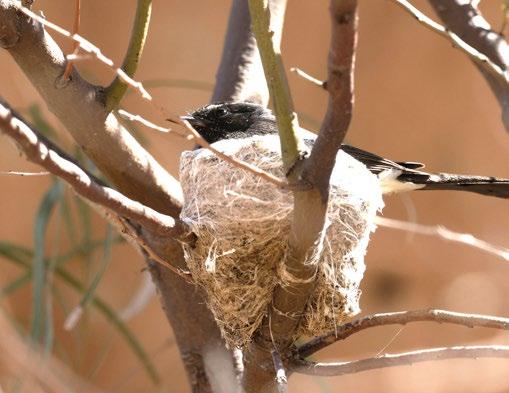
management of factors within our control (such as grazing pressure) has enabled us to promote greater numbers of granivores than likely would have occurred in the absence of this management. In contrast, factors driving waterbird abundance are climate-related and so are more difficult to influence through management actions.
For this most recent survey period, rainfall had been around average, with a substantial fall in early August, so perennial vegetation was in fair to good condition overall. The two months prior to the survey were mostly dry, however, so annuals were dying back, but there was still an abundance of flowers, including daisies and parakeelya.
The five-day survey spanned the 421,000-hectare reserve, with 31 fully surveyed sites and two additional opportunistic sites recorded during driven segments between sites.
75 bird species, comprising 4,447 individuals, were observed at the survey sites, and 44 species (1,839 individuals) during the driven segments, totalling 76 species (6,286 individuals). To date, 168 bird species have been recorded on Witchelina Nature Reserve during these surveys.
Budgerigars (Melopsittacus undulatus) were again the most numerous of migratory or nomadic species, with 1,283 recorded. Other species were recorded in smaller numbers, including 59 Diamond Doves (Geopelia cuneata), 42 Cockatiels (Nymphicus hollandicus), 82 Crimson Chats (Epthianura tricolor), 10 Orange Chats (Epthianura aurifrons) and 3 Brown Songlarks (Megalurus cruralis). Six Painted Finches (Emblema pictum) were observed at Termination Dam, continuing their presence at this site intermittently or continuously since May 2022.
Summer visitors included 1 Black-eared Cuckoo (Chrysococcyx osculans) (the only cuckoo recorded during the survey), 38 Red-backed Kingfishers (Todiramphus pyrrhopygius) (the highest total for any survey), 4 Rainbow Bee-eaters (Merops ornatus), 93 Rufous Songlarks (Megalurus mathewsi) (also the highest total for any survey), 6 White-breasted Woodswallows (Artamus leucorynchus), 14 Masked Woodswallows (Artamus personatus) and 2 Whitebrowed Woodswallows (Artamus superciliosus), and 26 White-winged Trillers (Lalage tricolor).
Threatened native bird species observed during the survey included the Southern Whiteface (Aphelocephala leucopsis leucopsis) and the Thickbilled Grasswren (Amytornis modestus), both of which are nationally listed as Vulnerable.
As is expected in spring, much breeding behaviour was observed during the survey, including entering or exiting nest hollows or nests in vegetation, carrying nesting material, sitting on nests, carrying food items, and feeding or tending juveniles.
We extend our heartfelt thanks to all our volunteer survey participants, Jennifer Hiscock, Peter Christy, Coral Johnston, Margaret Evans, Philippa Horton, and the late Phil Cole. Phil’s significant contribution to this and other Nature Foundation activities will always be remembered. We are immensely grateful for the support and dedication of all our survey volunteers over the years and look forward to the 20th Witchelina bird survey in 2025.
Para Woodlands Nature Reserve is a 500-hectare area of former farming land that was bequeathed to Nature Foundation and the Department for Environment and Water (DEW) in 2003 for shared management by the late Mrs Elizabeth LawSmith OAM and her husband David, who desired to see the farmland restored and managed to provide habitat for declining woodland birds.
The farm was used for cropping and grazing but also retained areas of remnant vegetation. To date, revegetation has occurred over 200 hectares, predominantly on the former cropping land with over 120,000 native plants and over 1,000 kilograms of native grass seeds used.
Since the project's inception, 2024 was the driest year recorded at Para Woodlands, with only 238.5mm of rainfall recorded. These conditions did not lend themselves to further revegetation, so much of last year's focus was on supporting and maintaining the previous revegetation, along with strategic and opportunistic weed control.
The revegetation and management to date are realising Mrs Elizabeth Law-Smith OAM's desire to enhance biodiversity, with a wealth of native species, including pollinators, attracted to the reconstructed habitats.
An initial survey undertaken in 2003 recorded 24 native bird species at Para Woodlands. The list now comprises more than 119 species, of which 65 have national, state, and regional conservation ratings.
Hidden behind the farmland and grassy hills that tourists drive past on their way to the Flinders Ranges is a vast and relatively intact area of rugged hills that comprises the eastern slopes of the northern Mount Lofty Ranges. It is an area with rich and varied mammal, reptile, and bird life. A kind of 'pocket outback' only 200km from Adelaide that until recently was mainly known by local grazing families and bushwalkers.
The entire eastern slopes area is a vast canvas for long-term conservation. Mongolurring—at the region's core—is a jewel that deserves our protection and restoration."
– Anonymous Major Donor
A bird survey undertaken by Dr David Paton in late August 2024 recorded a new species not previously recorded on the reserve, a White-throated Gerygone (Gerygone olivacea olivacea), listed as Rare in South Australia. While this and some other species detected last year (such as Pallid Cuckoo and Spiny-cheeked Honeyeater) are likely visitors, stopping by during migration or driven out of their normal range by the dry conditions, it is positive to see that the reserve is providing refuge to a variety of species. More nests of the nationally EPBC-listed Diamond Firetail (Stagonopleura guttata) have also been spotted in the revegetated areas. Habitat enhancement activities continued, including installing more insect hotels near the understory planting enclosures, adding woody debris to revegetation areas to provide shelter for reptiles and invertebrates, and monitoring the use of wildlife boxes. Many thanks to Para Woodlands Restoration Ecologist Dr Dragos Moise (DEW), whose passion and efforts are paramount to achieving these positive outcomes for nature.
Thank you to everyone who has contributed to our Mongolurring Conservation Management Appeal.
Your support—in any amount—is deeply appreciated and vital for achieving our goal of conserving, restoring, and protecting more land for future generations.
Your donations—including some generous major gifts—combined with a Friends of Parks invasive weeds grant recently won by our Volunteer program, will enable us to achieve the initial first steps for critical reserve management actions: fencing works, feral species and weed control, and contribute towards establishing baseline biodiversity monitoring sites, allowing us to understand the intricacies of the landscape, and using this to inform evidencebased conservation planning and further actions.
We look forward to sharing further updates on these important initiatives and their outcomes.
You can contribute to our Mongolurring Conservation Land Management appeal at: naturefoundation.org.au/ mongolurring-appeal
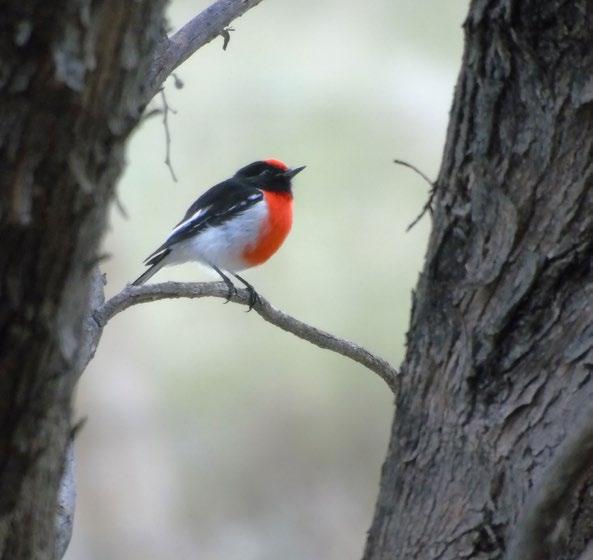

The Mount Lofty Ranges, home to one of Australia's highest concentrations of threatened woodland bird species, is facing a critical situation. With seventy-eight species in decline and twelve already regionally extinct, the time to act is now.
As a member of the ReBird the Ranges alliance, Nature Foundation is part of a powerful collective. Alliance partners, including the Department for Environment and Water, Hills and Fleurieu Landscape Board, Forestry SA, local councils, Trees for Life, Second Nature Conservancy, Birds SA, The University of Adelaide, SA Water, Bio-R, Greening Australia, Nature Conservation Society of South Australia, Birdlife Australia, and Conservation Volunteers Australia; are all united in our mission to protect the Mount Lofty Ranges' bird species.
At the heart of the ReBird the Ranges Action Plan is the belief that community participation is vital. We are committed to restoring critical bird habitats through revegetation, protecting existing habitats, and managing threats. By researching, monitoring, and adapting plans, we aim to improve bird recovery initiatives and increase community awareness and participation in conservation efforts.
This decline of bird species in the region can be linked to a combination of factors, including habitat loss, changes to fire regimes, and the impacts of
native and feral grazing animals on the remaining native vegetation. The effects of climate change are also expected to exacerbate these threats.
ReBird the Ranges encourages the community to actively participate in species recovery through hands-on habitat restoration and supporting conservation projects, including our revegetation efforts at Para Woodlands (which we co-manage with the Department for Environment and Water) and Watchalunga Nature Reserves.
For instance, revegetation efforts at Para Woodlands and Watchalunga Nature Reserves have already seen an increase in bird populations.
We look forward to sharing more updates regarding the results and impact of ReBird the Ranges.
For more information, visit rebirdtheranges.org
Nature Foundation is proud to support the valuable conservation work of the Kangaroo Island Landscape Board and is pleased to share this summary of 2023–24 project achievements.
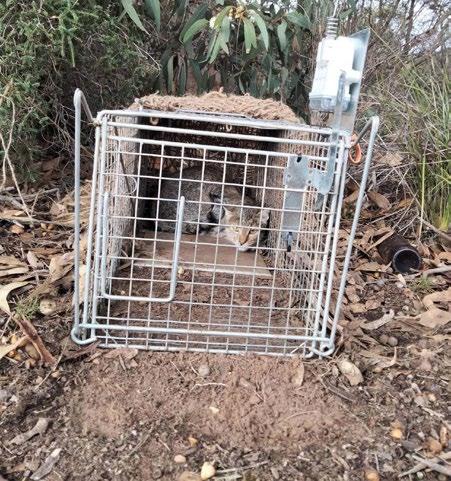
The Kangaroo Island Feral Cat Eradication Program is one of Australia’s ambitious programs to remove an invasive, introduced, predatory species that devastates our native animals.
Some of the most threatened native species in Australia live on Kangaroo Island, many of which are at extreme risk from feral cats. The Kangaroo Island Feral Cat Eradication Program is a practical example of how good governance, strategic planning, community commitment and appropriate resourcing can effectively remove threats from the landscape, creating safe havens for natives and reversing the decline of critically endangered species.
The Feral Cat Eradication Program scaled up operations in 2023–2024, with traps deployed across the entire Dudley Peninsula and managed seven days a week to maximise control efforts. To increase trapping efficiency across large areas simultaneously, more than 650 cage traps were fitted with Celium trap monitoring technology and managed by the field team and landholders across the entire eradication zone. This resulted in 447 feral cats being removed using cage traps over 64,244 trap nights.
Advances in conservation technology are significantly impacting program results. 264 4G-enabled camera traps linked to eVorta AI image analysis software were deployed across the Dudley Peninsula. These AI-linked cameras have increased the program’s efficiency by more than 80% due to near real-time access to images and the rapid and accurate identification of feral cats. Kangaroo Island Landscape Board also used the camera network to monitor trends in the Dudley Peninsula’s KI echidna and southern brown bandicoot populations in response to feral cat eradication.
The program has also established a ‘Call in a Cat’ feline hotline, providing a dedicated phone number for residents and tourists to report cat sightings. This initiative proved highly successful, with 18 calls received, which helped direct efforts to remove these feral cats.

NowextinctonmainlandAustralia,thenationallyendangered GlossyBlack-cockatoosubspeciesCalyptorhynchuslathami halmaturinushasitslastrefugeonKangarooIsland.
TheGlossyBlack-cockatooRecoveryProgramstartedin1995 withlessthan160GlossyBlack-cockatoosofthissubspecies inexistenceacrossKangarooIsland.Ithasnursedthe populationbackfromthebrinkofextinctionandhelpedit spreadeastwardsacrosstheisland.
Recoveryeffortsweresignificantlyimpactedbythe2019-2020 KangarooIslandbushfires,andeffortshavesincefocusedon deliveringstrategicon-groundmanagementactionstoassist therecoveryofkeywoodlandbirdspeciespost-fire.
GlossyBlack-cockatooshavedeclinedregionallyonthe fire-affectednorthcoastofKangarooIslandsince2020, andfledglingshadaverylowsurvivalratein2022and2023. However,theeasternpopulation(aroundAmericanRiverand DudleyPeninsula)isincreasing duetoworkprovidingand maintainingnestboxesoverthelastdecadeandcontrolling andexcludingpestsatnestsites.
The2023–2024annualGlossyBlack-cockatoocensusfound a minimumpopulationcountof453birds.33volunteers contributed300hourstotheannualcensus,and48property ownersprovidedaccesstosurveysites.
ToincreaseGlossyBlack-cockatoofeedingandnesting habitat,4,000Sheoakswereplantedon36properties,nests weremaintainedat19sites,andthreenewnestboxeswere installed.Nestboxeswereclosedinspringandre-openedin summertodeterbreedingbypestspecies.Thenestboxes werealsotreatedtopreventferalhoneybeeinvasions.
StudentsfromKangarooIslandCommunityEducation andOodnadattaAboriginalSchoolcreatednestboxesfor threatenedwoodlandbirds,andatreehollowcreationtoolwas trialledtocreateclimate-resilienthollowsforwoodlandbird species.
Technologicaladvancesarealsoplayingacrucialroleinthe GlossyBlack-cockatooRecoveryProgram.Acousticrecorders havebeenstrategicallydeployedattwobiodiverseplanting sitestocapturethesoundsofspringbirdspecies.Thisdatawill beusedtotrainanAIprogramtoidentifyKangarooIslandbird acousticdata.

Kangaroo Island is home to many endemic plant species that are found nowhere else, and native vegetation provides many important benefits, including food and habitat to native animals, including threatened and endangered species.
The Kangaroo Island (KI) Native Plant Nursery has offered an essential service for many years, providing landholders with critical advice about what to grow where ensuring that seed is of KI provenance, and ensuring that there is no biosecurity risk posed to the island by bringing over plants that are grown on the mainland.
In recent years, the Kangaroo Island Native Plant Nursery has played a vital role in meeting the demand for habitat restoration by providing seedlings of KI provenance to revegetate areas affected by the 2019-2020 bushfires.
In 2023–2024, the KI Native Plant Nursery propagated 45,000 plants as tube stock for the 2023-24 growing season. 150 different Kangaroo Island native plant species were grown via seed germination and cuttings from local KI material, with many of these species listed as threatened at the national, state, or regional level.
42 landholders were supplied with 15,024 trees and shrubs to help re-plant native vegetation and shelterbelts burnt in the 2019-20 bushfires, and volunteers donated 315 hours to assist with seed cleaning, transplanting and thinning seedlings.
Funding for the program also facilitated the installation of a new remote Wi-Fi irrigation system, which enabled remote control of the watering regime, a valuable time-saving resource for the team.
We congratulate the Kangaroo Island Landscape Board, its team, and its volunteers on the important results achieved in 2023-2024. We look forward to providing further support over the coming year.
Learn more about and support these Kangaroo Island conservation programs here: naturefoundation.org.au/donate-ki

Kelsey Bennett Conservation Land Manager
As our Adelaide-based Conservation Land Manager, Kelsey is responsible for the operational management of programs and projects to ensure effective conservation and land management across the seven nature reserves within closer proximity to Adelaide.
Kelsey has a Bachelor of Science in Animal Behaviour, and her Honors project involved working with Pygmy Bluetongue Lizards at Tiliqua Nature Reserve. She has significant experience in the industry and out in the field, holding roles in environmental state government departments and conservation NGOs.
How did you come to be at Nature Foundation?
I’m very passionate about protecting and conserving wildlife and natural ecosystems and have devoted most of my working life to helping to achieve this goal. I’ve worked for environmental not-for-profit organisations in the past and I loved being part of a like-minded team collaborating to solve complex problems and achieve great outcomes for nature conservation. I was very excited when the opportunity arose to join the Nature Foundation team and jumped at the chance to be a part of such a great organisation.
What are you looking forward to most as part of your role?
I’m looking forward to taking on new challenges and helping the organisation to achieve its goals, as well as meeting the team and its supporters who already do such great work for the environment.
I’m also excited to visit the nature reserves that I’ll be helping to manage and discovering the unique biodiversity that exists at each.
What are some of your interests outside of work?
I enjoy doing outdoor activities in nature such as hiking, snorkelling, kayaking and camping. I’m a keen birder and love spending time in quiet reserves looking for birds and other wildlife (and hunting for native orchids!) I’ve recently developed an interest in overnight hiking after completing a hike in Tasmania last year and hope to do more walks this year. When I’m at home I enjoy gardening, art (drawing and painting), and spending time with my husband and our two dogs.

Long-time supporter Bill Doyle is very active behind the camera, and you’ll likely have seen many of his photos taken across our reserve network and at events. This edition, we’re putting him front and centre, learning about his involvement with Nature Foundation and his passion for conservation.
How long have you been a Nature Foundation supporter, and how did you first get involved?
I first travelled to Hiltaba Nature Reserve in 2013 to undertake field survey work with the Scientific Expedition Group (SEG) and was immediately taken with the dramatic beauty of the area. I greatly enjoyed roaming the ridgelines, and we even made an (unsuccessful) attempt to walk out to Lake Acraman from the property.
I vowed I would return (armed with a proper landscape camera!), and did again in 2020, and then again last year, where I was able to take advantage of the extensive network of excellent walking tracks that have been created in the reserve since my first visit.
I also attended my first Pygmy Bluetongue Lizard Crawl at Tiliqua Nature Reserve in 2013, and was happy to repeat the experience this year, with considerably more success in locating these charming little reptiles (that don’t have blue tongues!)
And I first attended a planting at Watchalunga Nature Reserve in 2017, and then again in 2023 and 2024. It’s been great to assist in actively revegetating the site and to see the progress that’s been made on it.
I was delighted to discover that the Foundation has recently acquired property at Mongolurring in the mid-north— a part of the state that’s very dear to me— that is an outstanding example of the rugged mallee hill country of the northern Mount Lofty Ranges.
In the midst of all this my partner and I have become formal members to support the important work the organisation does.
Why do you support Nature Foundation?
I greatly appreciate the work Nature Foundation is doing in identifying and then purchasing with the intention to protect important and relatively intact ecosystem remnants in regions across South Australia.
What do you find most rewarding about your involvement with Nature Foundation?
I really enjoy contributing to an organisation that is making a real tangible difference, and where I can see tangible results of the good work the Foundation is doing.
What are your hopes for the future of nature conservation and biodiversity in Australia?
I hope to see more and more of the remaining wild areas of the country be managed with a primary focus on conservation, to halt the still pernicious march of land clearing, and to restore further areas to health, to create important biological reservoirs to ensure we halt species loss and land degradation, and to provide breathing room for our flora and fauna while they are confronted by the threats that ecosystem disruption and climate change has brought, and, sadly, will continue to bring.
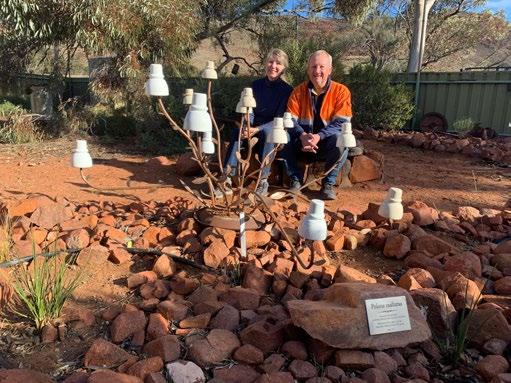

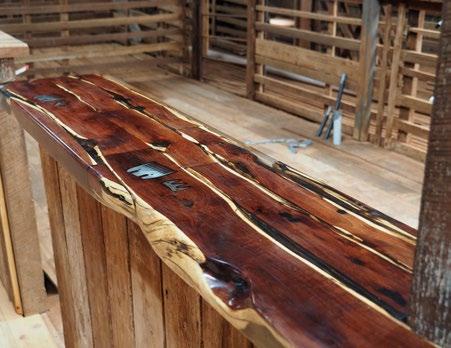
In our last edition, we shared the restoration of the Hildyard wagon, which was led by Bob Gray. During the wagon restoration, Bob was also provided with some 100+ year-old fence posts recovered from Hiltaba.
The posts were cut lengthwise and joined in two sections to form an L-shaped bar top around a former catching pen in the shearing shed. Under a clear resin finish, it uniquely features a number of historic shearing artefacts, including a pair of hand shears and a very early machine handpiece.
The Hilta-baa was installed in October 2024 when the restored Hildyard wagon was returned to Hiltaba.
In June 2021, several members of the Australian Plants Society—Northern Yorke Peninsula Group took on the project of re-invigorating the Hiltaba Homestead gardens.
During gardening, a plan was made to make a garden sculpture using some of the old relics. David Sloper took on the project of making the sculpture at his home using some old insulators collected from Hiltaba. The Australian Plants Society— Northern Yorke Peninsula Group generously donated some funds to purchase additional new materials, including copper and a plaque.
In July 2024, the opportunity to return the sculpture to the gardens at Hiltaba arose, and it was positioned in the backyard of the Homestead.
The sculpture represents a local Ptilotus exaltatus (Pink Mulla Mulla) plant. The insulators represent the flowers, with the stems and leaves made from copper which will gradually turn green over time. Nature Foundation greatly appreciate the care and consideration shown to the grounds and the creativity involved in the sculpture. This unique piece is sure to captivate visitors who are enjoying the gardens.
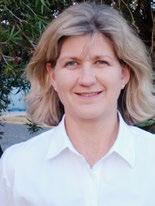
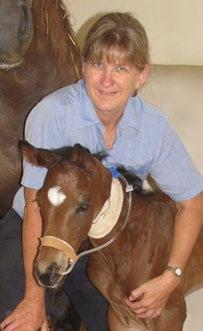
We are humbled by the generous legacies our bequestors leave to the Nature Foundation, supporting our conservation work beyond their lifetime. Recently, we were honoured to receive a Gift in Will from the Estate of Jane Axon.
According to her family, Jane’s interest in Australian wildlife began as a child. Much to her mother’s disdain, she collected dead animals and spent many hours studying and saving their skeletons. She later became an accomplished veterinarian, specialising in equine medicine. She was internationally recognised as an expert in neonatal care of foals and the author of many scientific papers and textbooks in her field.
Following her retirement, Jane concentrated her attention on assisting with mammal research through volunteering at the South Australian Museum, both in the Mammal Collection and field research. Her scientific knowledge and prowess were greatly appreciated.
Jane’s unwavering belief in conservation, particularly of Australian wildlife, and her direct support to Nature Foundation for at least 10 years, is a testament to her lifelong commitment to nature. Her family has shared with us that Jane strongly supported and believed in Nature Foundation’s work conserving Australian wildlife and wanted to support this after her death by leaving a portion of her estate towards it.
We thank Jane for her support and her family for honouring her commitment to our cause. Their actions are a true reflection of the impact one person’s dedication can have on our work.
If you would like to learn more about leaving a Gift in Will to Nature Foundation, we encourage you to visit naturefoundation.org.au/bequests or contact Patrick Mentzel, Philanthropy Coordinator on (08) 8340 2880 during business hours or by emailing patrick.mentzel@naturefoundation.org.au.
Your support, like Jane’s, can make a lasting impact on the conservation of Australian landscapes and wildlife.

Professor Philip Weinstein, whose impactful tenure has left an indelible mark on the Nature Foundation, has decided to step down from the Board after six years as Deputy Chair.
Phil was elected to the Nature Foundation Board in 2018. As Deputy Chair, Phil shifted the organisation's science strategy from process-focused to outcomes-focused, prioritising quantifiable biodiversity gains. This is a crucial pillar of our work as we strive to maximise our impact with our available resources.
Phil played a vital role in launching several significant scientific initiatives, including the first Nature Foundation Science Strategy, a major Australian Research Council grant in collaboration with the University of New South Wales to address overgrazing management, establishing a partnership with Yundi Nature Conservancy to develop more cost-effective biodiversity assessment methods using remote sensing. Realigning our research investment with our organisational knowledge needs has been invaluable. During his term, Phil's expertise as a leading scientist and Director has made him an exceptionally valuable contributor to Nature Foundation. Phil was keenly interested in ensuring our scholarships were awarded to students who increased the science available for application on our reserves. He was always keen to encourage a student to study further.
Personally, I will miss Phil’s years of executive experience in universities which was a great asset to the Foundation. The Board and I would like to thank Phil for his service and wish him all the very best in the next chapter of his life.
Jan Ferguson OAM, Board Chair Nature Foundation



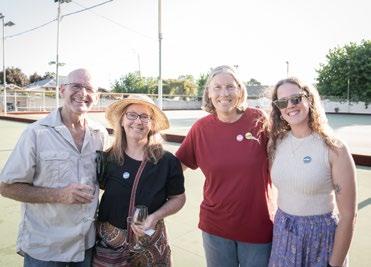




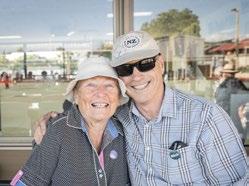
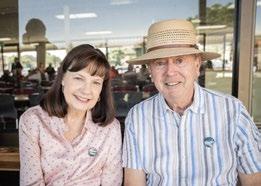

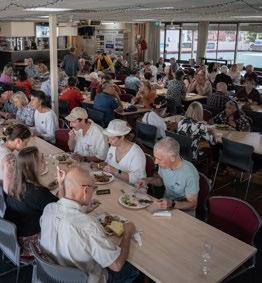
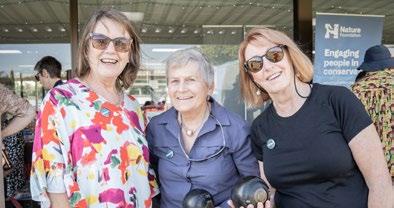
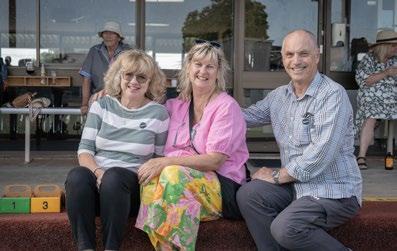
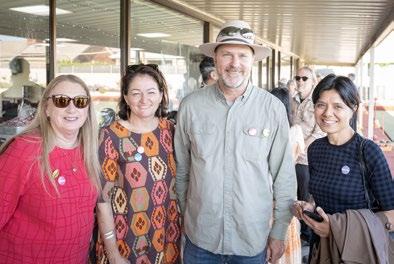
A warm late November evening saw Nature Foundation members and supporters gather at Payneham Bowling Club.
The atmosphere was filled with the joy of lawn bowls, drinks, dinner, catchups, and conversations. It was a delightful way to wind up a busy year, and everyone’s presence added to the vibrancy of the event.
Nature Foundation Chair Jan Ferguson OAM shared some of 2024’s successes, including the acquisition of two new nature reserves—Bullock Bridge and Mongolurring. These milestones are a testament to the hard work and dedication of our members and supporters, who have played a crucial role in conserving, restoring, and protecting more land and native flora and fauna for future generations.
Photos by Sputnik

Thank you to all Nature Foundation members who have renewed for 2025, and welcome to our new members!
Members play a vital role in supporting Nature Foundation and our work. In return, we offer a range of membership benefits that we believe provide excellent value for your support. These benefits include:
• Nature Matters magazine (two to three editions per year, with priority given for optional printed copies)
• Free or discounted entry to Nature Foundation events
• Exclusive participation opportunities, e.g. planting days and reserve events
• Periodic offers and discounts, such as our special offers for 2025, which include State Flora Nursery, Cleland Wildlife Park and Bec Hardy Wines
• Voting rights at the AGM
• Annual Impact Report (with priority given for optional printed copy)
We welcome new members to join our like-minded community, united by our shared mission to engage people, resources and good science to conserve the precious habitat of South Australia and beyond.
Annual membership fees:
Individual: $50 Couple: $80
Lifetime membership fees: Individual: $1,500 Couple: $2,400
If you would like to learn more or join, you can do so online at naturefoundation.org.au/join
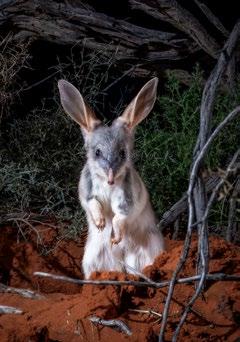
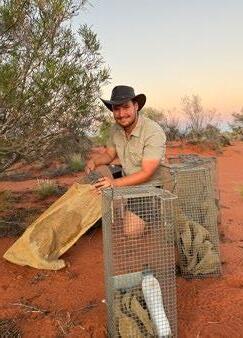
Since 2000, Nature Foundation has awarded 459 grants in nature science to university students, universities and other research institutions, with a total value of more than $1.9 million.
Nature Foundation offers grants in several categories, from Honours and PhD work to early career research and other specific projects.
Our 2025 research grants round has recently opened, and we invite applications from students undertaking research in the environmental and nature science fields.
Nature Foundation’s grants program provides funding in the following categories:
• Grand Start Grants Program for Honours, Masters and PhD students
• Nature Foundation Scientific Expedition Foundation RL & GK Willing Grant for Honours students
• Roy and Marjory Edwards Scholarship for Masters and PhD students
• along with the Mike Bull Award for Early Career Nature Scientists
See full details on grant categories and how to apply at naturefoundation.org.au/grants
Applications close Sunday 6 April 2025, and successful recipients will be advised by June 2025.
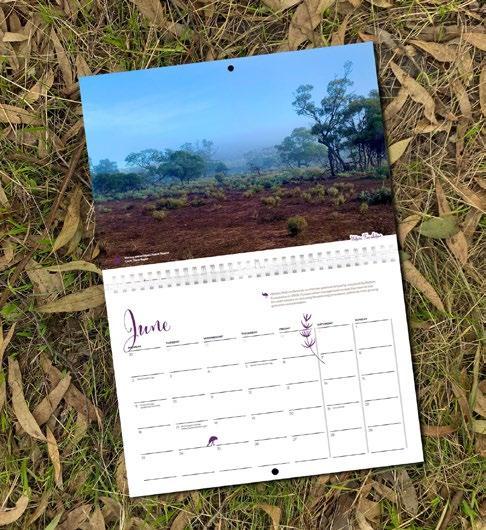


Our 2025 Nature Calendar is a visual treat, sharing photos of our nine nature reserves taken by Nature Foundation members, volunteers, staff and supporters.
Each spread features a stunning landscape, unique flora and fauna, bringing the beauty of nature to your home. The calendar also includes key Australian dates, public holidays (all states and territories), and significant naturerelated days.
Getting your 2025 Nature Calendar is as easy as a few clicks or a quick call. All proceeds support the ongoing work of Nature Foundation.
You can make your purchase online via naturefoundation.org.au/shop or visit or call head office during business hours on (08) 8340 2880.

Are you considering volunteering for nature in 2025?
We value the support of our dedicated volunteers, who contribute to our cause in a variety of ways. From conservation and reserve support to infrastructure and office-based projects, there’s a role for everyone who shares our passion for nature.
As a Nature Foundation volunteer, you are part of a supportive community. You will receive a uniform, personal accident insurance, travel reimbursements, and regular updates. Most importantly, you will undergo comprehensive training to ensure your safety and success in all activities, with continuous support from our staff.
If you are ready to make a difference in 2025, take the first step by visiting our website at naturefoundation.org. au/volunteer. There, you can follow the ‘Register Your Interest’ prompts to start the process. You will have a chance to chat with our Volunteer and Visitor Engagement Coordinator in a matching phone call, where you can learn more about volunteering with us before making a commitment.
Learn more and get started at naturefoundation.org.au/volunteer
THE BOARD
Chair
Deputy Chair
Directors
STAFF
Chief Executive Officer
Jan Ferguson OAM
Greg Limbert
Assoc. Prof. Jeremy Austin
Glenise Coulthard AM
Claire Fuller
Douglas Ransom
Lynn Wood
Alex Nankivell
Deputy CEO & Strategic Initiatives Mark Ashley
Corporate Services Program Manager Georgie Fiedler
Science & Knowledge Manager Dr Paul van Ruth
Senior Conservation Land Manager Jem Shimmield
Conservation Land Managers
Marketing & Communications Manager
Do you follow us on Instagram? If not we'd love you to follow our account and help us get the word out about the amazing work we do for nature!
We are also active on Facebook and LinkedIn.
See you online soon.
Kelsey Bennett
Samuel Hughes
Paul Drummond
Erica Stacey
Science & Knowledge Project Officer Dr Lucy Clive
Philanthropy Coordinator
Business Development Coordinator
Volunteer & Visitor Engagement Coordinator
Youth Programs Coordinator
Youth Programs & Conservation Officer
Field Ecologist
Office & Executive Coordinator
Patrick Mentzel
Conor Hilton
Carolyn Pickering
Katie Perry
Warren Milera
Dr Hugh McGregor
Jane Cooper
Work Health & Safety Policy Officer Gillian Elix
Conservation Officer (Trainee)
VOLUNTARY POSITIONS
Patron
Patron
Patron
Nature Foundation Ltd
Level 2 Payinthi 128 Prospect Road PO Box 34, Prospect SA 5082
Phone: (08) 8340 2880
Email: info@naturefoundation.org.au
naturefoundation.org.au @naturefoundationau
facebook.com/naturefoundationau
linkedin.com/company/nature-foundation
Raijieli Bovoro
Dr Barbara Hardy AO
Dick Smith AC
Reg Nelson
